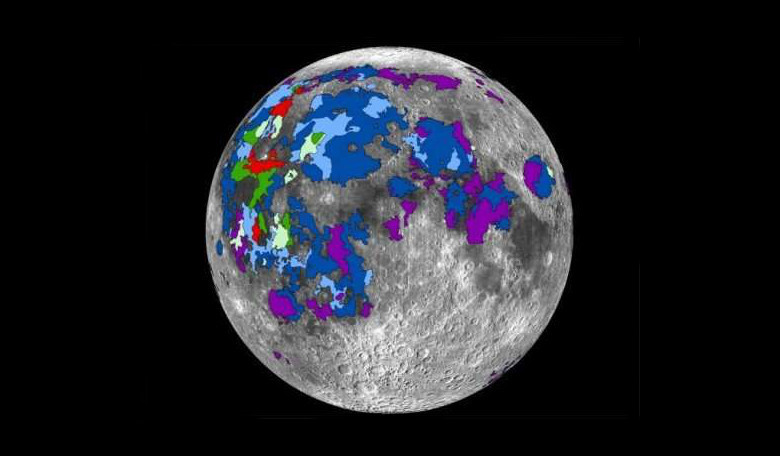A new study of volcanic outgassing on the lunar surface states that the Moon had an atmosphere which lasted for around 70 million years and was more prevalent than that surrounding Mars today.
The remains of this ancient frenzied volcanic activity can still be seen on the Moon today as smooth dark patches that cover around 16 percent of the lunar surface. These patches are large basaltic plains known as maria, and they are similar in composition to the rocks found in Hawaii, however the lunar basalts contain significantly less water.
This new study, conducted by Dr. Debra H. Needham, NASA Marshall Space Flight Center, and Dr. David A. Kring, Universities Space Research Association (USRA), found that around 3 to 4 billion years ago, the substantial volcanic activity released sufficient volatiles – around 1019g – to form a transient and prominent atmosphere, but which has since been lost to space.
It is possible however, that some of these volatiles may have ended up in the permanently shadowed regions on the lunar surface as hydrogen deposits - deposits that are currently suspected to be made up of water.
"The total amount of H2O released during the emplacement of the mare basalts is nearly twice the volume of water in Lake Tahoe. Although much of this vapour would have been lost to space, a significant fraction may have made its way to the lunar poles. This means some of the lunar polar volatiles we see at the lunar poles may have originated inside the Moon,” said Needham.
The team’s results indicate that the atmosphere was thickest during the peak in volcanic activity about 3.5 billion years ago and that the maximum atmospheric pressure at the lunar surface could have reached around 1.5 times higher than Mars' current atmospheric surface pressure.
"This work dramatically changes our view of the Moon from an airless rocky body to one that used to be surrounded by an atmosphere more prevalent than that surrounding Mars today,” added Kring.
This new picture of the Moon has important implications for future exploration programmes as the suspected volatiles trapped in icy deposits could provide fuel and possibly air for astronauts conducting lunar surface operations.











